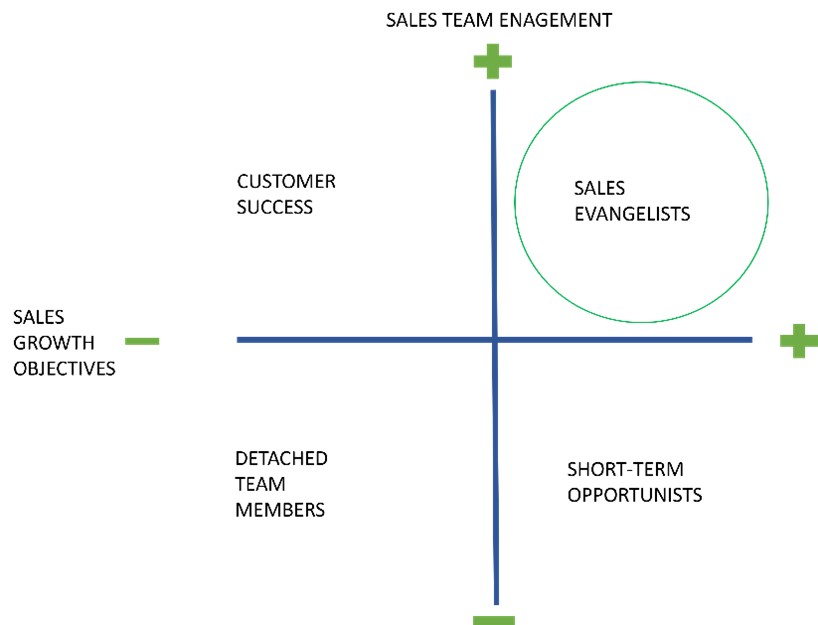Your Sales Growth Might Be on Idle If…
Sales leaders or CEOs will often ask me to work with their teams on sales training, and then we uncover other ways to improve their sales organization. It involves sales consulting on the underlying structures that support the sales team; we find ways to significantly improve those structures, which then helps sales training to create even better results.
Two areas where sales leaders can make immediate impact are the overall design of the sales organization and having accurate sales role descriptions. In my network interactions and work consulting, I frequently ask about the accuracy of job descriptions. What I’ve found is most people feel that their job description didn’t accurately depict the day-to-day expectations of the role.
When this happens in sales roles, the net result is a sales organization that’s on idle. This stalls growth and ultimately has a significant negative impact on the sales culture. By focusing on both the design of your sales organization and having accurate sales role descriptions, you can significantly change both the caliber of your hires and your sales growth results.
Sales Planning Strategies to Improve Sales Role Descriptions
This article will provide you with strategies to design better role descriptions. Better role descriptions have a direct impact on your hiring, onboarding, and sales training initiatives.
Sales Planning Strategy #1. Get a clear picture of your current team.
You can use the sales tool below to help you assess your team.
- High-growth sales organizations need team members with a focus on Sales Growth Objectives (X-Axis) and Engagement (Y-Axis). Those are your sales evangelists.
- If you have team members with high engagement but low focus on growth objectives, they’re likely better suited for Customer Success
- Team members who are highly focused on growth but otherwise disengaged are your Short-Term Opportunists. They may help you grow for the short term, but there’s potential for long-term issues, whether that be working with less-than-ideal clients, or they may leave for another opportunity.
- Those who are who neither engaged nor focused on sales growth objectives are your Detached team members. They may be negatively impacting your clients and overall team morale.

Sales Planning Strategy #2. Evaluate the key roles of a sales team.
As sales organizations shift over time, roles will be added and then evolve in ways that no longer suit the current state or future vision of the firm. In your sales planning process, confirm the types of roles you need today and map those roles into the future. Examples include field sales, inside sales, sales engineers, business development, account management, and customer success.
Sales Planning Strategy #3. Reaffirm the sales culture you want to create.
Sales growth culture is your unique combination of factors that create sustainable, meaningful, profitable growth. A healthy sales growth culture focuses on the pillars of strategy, people, process, and technology. Chief sales officers and sales leaders are responsible for setting the sales culture. Your existing sales team will model the culture you create, and those you hire into the organization will assimilate to that culture by example. Are you setting the right sales culture examples?
Sales Planning Strategy #4. Prioritize the key sales skills required today and into the future.
Sometimes lack of engagement in a role comes down to the wrong skill fit. For example, if you have a role that is targeting new business, you need a sales professional with very strong prospecting skills and the willingness to prospect. But if you hire someone into the role that is weak in that area, they won’t succeed, and you won’t reach your sales growth goals. Clarity and specificity on the required sales skills, along with examples of what those skills look like action will help you to avoid a bad hire.
Sales Planning Strategy #5. Communicate and track your priority sales performance indicators.
Communicating your high-priority metrics will help ensure they’re tracked. Sales metrics will be dependent on the exact role, and you may customize a set of metrics for each role. If sales team members have a small number of specific and quantifiable metrics, you’ll see more significant improvements over a diluted focus on too many sales metrics.
Sales Planning Strategy #6. Have an assessment strategy for the sales training needs of your current team and to successfully hire future team members.
Too many times, sales training and sales hiring don’t result in positive outcomes. The right sales data can bridge the gap. As assessment strategy helps sales leaders to make informed choices about which sales training skills to develop, and which future sales team members will be the right hire.
Sales Planning Strategy #7. Get assistance from your sales team in validating their job descriptions.
Ask your team to play an active role in validating their daily activities and the skills needed in their roles. This will provide you with anecdotal data on where your job descriptions are clear and accurate and where they’re in need of some fine tuning.
We can help you hire and keep the right sales talent.
Don’t let your competition get an advantage. We can help. If you’d like more sales planning strategies to improve hiring and retention of top talent, let’s talk. Contact us to schedule a conversation with Amy.



 Our Strategic Selling signature sales training program is now available online. This online sales learning program is ideal for professional services and B2B sales. Get started with 2 free lessons.
Our Strategic Selling signature sales training program is now available online. This online sales learning program is ideal for professional services and B2B sales. Get started with 2 free lessons.